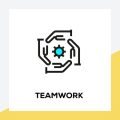1. Understanding the U.S. Job Market and ATS Expectations
If youre considering a career change in the United States, understanding how the job market works—and specifically how Applicant Tracking Systems (ATS) shape your chances—is crucial. U.S. employers rely heavily on ATS to filter through hundreds or even thousands of resumes before a human ever sees them. This means your resume must be both ATS-friendly and tailored for what American employers expect from someone making a career transition.
What Is an Applicant Tracking System (ATS)?
An ATS is software used by many U.S. companies to manage the hiring process. It scans resumes for keywords, relevant skills, and qualifications that match the job description. If your resume isn’t formatted correctly or doesn’t include the right terms, it may never reach a recruiter.
How U.S. Employers Use ATS
Most large and mid-sized organizations in the U.S. use ATS to:
- Automatically screen out unqualified candidates
- Search for specific skills, certifications, and experience
- Rank applicants based on keyword matches
- Maintain compliance with labor regulations
What Employers Look for in Career Changers
When switching careers, U.S. employers pay attention to:
| Employer Expectation | How to Address It in Your Resume |
|---|---|
| Transferable Skills | Highlight abilities that apply across industries, like leadership, problem-solving, or project management. |
| Relevant Experience | Showcase projects or roles—even volunteer work—that relate to your new target field. |
| Cultural Fit | Mention experiences demonstrating adaptability and willingness to learn. |
| Clear Motivation for Changing Careers | Briefly state why you’re making the switch in your summary section or cover letter. |
The Bottom Line for Career Changers Using ATS
Your resume needs to be clear, keyword-rich, and directly aligned with U.S. employer expectations. By understanding how ATS works and what hiring managers want to see from career changers, you can make sure your experience translates effectively—helping you stand out for the right reasons.
Identifying Transferable Skills and Reframing Your Experience
Why Transferable Skills Matter for Career Changers
When changing careers, you may worry that your previous experience won’t impress U.S. employers or pass through Applicant Tracking Systems (ATS). The truth is, many skills are valuable across different industries. These are called transferable skills—abilities like communication, project management, leadership, and problem-solving. Highlighting these skills in ATS-friendly language can help recruiters see your true value.
How to Pinpoint Your Most Relevant Skills
Start by reviewing job descriptions for your target roles. Identify common requirements and keywords. Then, reflect on your previous work—what tasks did you do that match these needs? For example, if a job asks for “team collaboration” and you have experience leading group projects, this is a match.
Examples of Transferable Skills
| Previous Industry | Transferable Skill | ATS-Friendly Language Example |
|---|---|---|
| Education | Training & Development | Facilitated employee onboarding sessions to boost team productivity |
| Retail | Customer Service | Delivered exceptional customer support, resolving 20+ daily inquiries efficiently |
| Healthcare | Attention to Detail | Maintained accurate patient records following strict compliance standards |
| Hospitality | Problem Solving | Quickly resolved guest issues to ensure high satisfaction scores |
| Engineering | Project Management | Coordinated cross-functional teams to complete projects on time and within budget |
Reframing Your Experience for U.S. Employers
U.S. recruiters look for specific achievements and quantifiable results. When describing your experience, focus on outcomes and use numbers where possible. Instead of saying “helped with events,” try “organized three corporate events attended by over 200 participants.” This approach shows impact and fits U.S. resume expectations.
Tips for Writing ATS-Optimized Bullet Points
- Use keywords: Borrow terms from the job description.
- Be concise: Keep each bullet point short and focused.
- Add numbers: Quantify your achievements whenever possible.
- Avoid jargon: Use language familiar to U.S. employers.
- Show results: Emphasize the positive outcomes of your actions.
Your Action Plan: Translating Experience for ATS Success
- Create a list of your top transferable skills based on job postings.
- Match each skill with relevant experiences from your background.
- Edit your resume bullets using ATS-friendly keywords and achievement-based language.
- Check for clarity—ask a friend or mentor to review your resume for American workplace norms.

3. Tailoring Your Resume and Cover Letter for ATS
Why Customization Matters for Career Changers
If you’re changing careers, it’s essential to make your resume and cover letter stand out to both the ATS (Applicant Tracking System) and U.S. employers. Many companies use ATS software to screen applications, so customizing your documents is key to getting noticed.
Formatting Best Practices for ATS
ATS systems prefer simple, clean formatting. Avoid graphics, tables (except as shown below), headers, and footers that might confuse the software. Use standard fonts like Arial or Times New Roman, and save your file as a Word document (.docx) unless the job posting asks for PDF.
Example of ATS-Friendly vs. Non-ATS-Friendly Resume Formatting
| ATS-Friendly | Non-ATS-Friendly |
|---|---|
| – Standard section headings (e.g., Experience, Education) – Bullet points for duties – No images or fancy designs – Consistent font style and size |
– Text boxes and columns – Graphics or photos – Unusual fonts or colors – Information in headers/footers |
Keyword Optimization Strategies
To pass ATS filters, match your resume keywords to those found in the job description. For career changers, focus on transferable skills and industry-specific terms. Don’t just copy-paste—integrate them naturally into your work history and skills sections.
How to Identify Relevant Keywords
- Review several U.S.-based job postings for your target role.
- Highlight repeating skills, certifications, and qualifications.
- Add these keywords throughout your resume (in your summary, experience, and skills sections).
Sample Table: Transferable Skills Mapping
| Your Previous Role | Transferable Skill | Target Job Keyword |
|---|---|---|
| Teacher | Communication, Training | Team Collaboration, Employee Training |
| Sales Associate | Customer Service, Relationship Building | Client Relations, Account Management |
| Project Manager (IT) | Organization, Deadline Management | Project Coordination, Time Management |
Personalizing Your Cover Letter for U.S. Employers
A personalized cover letter can set you apart from other applicants. Briefly explain why you’re making a career change and connect your past achievements to the needs of the new role. Use examples that highlight how your unique background will benefit the employer.
- Mention the company name and job title specifically.
- Show enthusiasm for joining their team and learning new skills.
- Tie in keywords from the job description where relevant.
4. Leveraging U.S.-Specific Terminology and Industry Keywords
When you’re changing careers and applying for jobs in the United States, using the right American workplace phrases, job titles, and industry-specific keywords is crucial for getting noticed by both ATS (Applicant Tracking Systems) and hiring managers. U.S. employers and their software are trained to scan for certain words and phrases that match local expectations. If your resume or cover letter uses unfamiliar terms or foreign job titles, your application may not get the attention it deserves.
Why Language Matters in U.S. Job Applications
ATS systems look for specific keywords that match the job description. If your experience is described with terms from another country or industry, the system might overlook your skills—even if you’re highly qualified. Aligning your language helps ensure your experience gets recognized.
Common Differences: International vs. U.S. Terms
| International Term | U.S. Equivalent |
|---|---|
| CV | Resume |
| Curriculum Vitae | Resume |
| Human Resources Officer | HR Specialist or HR Generalist |
| Managing Director | Chief Executive Officer (CEO) or Executive Director |
| Accounts Department | Accounting Department or Finance Department |
| P.A. (Personal Assistant) | Executive Assistant or Administrative Assistant |
| Bachelor’s Degree (with honors) | Bachelor’s Degree (omit “honors” unless applying to academia) |
| References available upon request | (Usually omitted in U.S. resumes) |
Finding the Right Keywords for Your Target Role
Step 1: Read several recent job postings for positions you want in the U.S.
Step 2: Highlight recurring words, skills, certifications, and job titles.
Step 3: Update your resume and LinkedIn profile using these exact terms where they fit your experience.
Example: Translating Experience into U.S.-Friendly Language
| Your Original Experience | U.S.-Optimized Version for ATS |
|---|---|
| Led a team of five in a customer-facing role at a retail bank in Europe. | Supervised a team of five Customer Service Representatives at a major U.S. retail bank; delivered high-quality client support and resolved account issues. |
| Handled payroll as part of finance duties. | Processed biweekly payroll using ADP software; ensured compliance with U.S. tax regulations. |
| Taught English as a Second Language in Asia. | Taught ESL (English as a Second Language) classes to adult learners; developed curriculum aligned with U.S. standards. |
Tips for Making Your Application ATS-Friendly and Culturally Relevant:
- Avoid abbreviations or jargon not used in the U.S.
- Mention relevant certifications commonly recognized in the U.S., such as PMP, CPA, or SHRM-CP.
- If your past job titles differ from standard U.S. roles, use the closest equivalent term in parentheses—for example: “Team Leader (equivalent to Supervisor).”
- Add skills that are popular in the U.S., like “customer service,” “project management,” “data analysis,” or specific software tools like Excel or Salesforce.
- If you have international experience, highlight how those skills transfer to an American work environment.
The Takeaway: Speak Their Language!
The more closely you can align your application materials with U.S. terminology and keyword trends, the better chance you’ll have of passing ATS screenings and making a positive impression on American employers.
5. Showcasing Adaptability and Cultural Fit
When you’re changing careers and targeting U.S. employers, it’s not just about your technical skills—it’s also about proving you can adapt and thrive in a new environment. U.S. companies value candidates who are flexible, open-minded, and ready to learn. Here are practical strategies to show your adaptability and cultural fit on your resume, cover letter, and LinkedIn profile so that both ATS (Applicant Tracking Systems) and hiring managers take notice.
Highlight Transferable Skills with Real Examples
Instead of simply listing soft skills like “adaptable” or “team player,” connect them to specific achievements from your past roles—even if they were in a different industry. Use action verbs and measurable results where possible.
| Skill | How to Showcase It | Example |
|---|---|---|
| Adaptability | Describe how you quickly learned new tools or processes | “Adapted to new CRM system within 2 weeks, improving team efficiency by 15%” |
| Growth Mindset | Mention certifications or upskilling initiatives | “Completed Google Data Analytics Certificate while working full-time” |
| Cultural Fit | Reference experience working with diverse teams or stakeholders | “Collaborated with cross-functional teams across three countries to launch marketing campaigns” |
Use U.S.-Relevant Keywords for ATS Optimization
Research job descriptions for the industry you want to enter and sprinkle relevant U.S. workplace terms throughout your application materials. This helps your resume pass through ATS filters and signals that you understand local business language.
Popular U.S. Workplace Terms to Include:
- Cross-functional collaboration
- Agile environment
- Diversity & inclusion
- Stakeholder management
- Continuous improvement
- KPI-driven results
- Remote work adaptation
Emphasize Growth Mindset and Learning Agility
The ability to learn quickly is highly prized in the U.S., especially for career changers. Mention any recent training, online courses, or certifications relevant to your target industry, as well as examples where you successfully navigated change.
Sample Resume Bullet Points:
- Pursued ongoing professional development by completing Salesforce Administrator Certification in 2023.
- Spearheaded transition from in-person to remote operations during organizational restructure, ensuring uninterrupted service delivery.
- Volunteered for cross-training opportunities to support different departments during peak periods.
Show Enthusiasm for Company Culture in Your Application Materials
Tailor your cover letter by referencing specific aspects of the company’s culture—such as innovation, teamwork, or community involvement—that genuinely excite you. This demonstrates that you’ve done your research and are eager to be part of their team.


